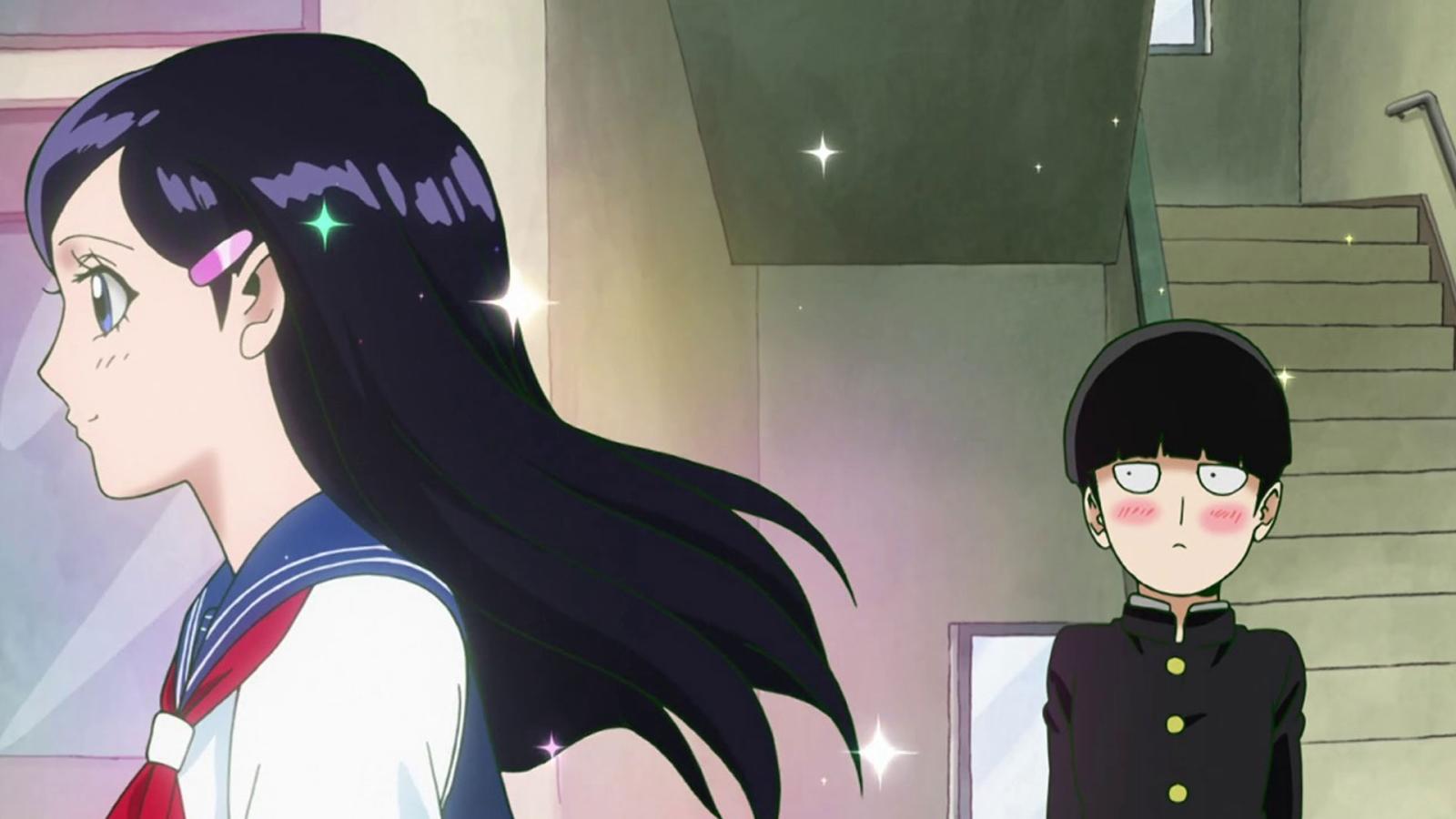It's hard to love a function.
The main driving point of the majority of the shounen anime is not romance, yet most authors are still trying to squeeze some love into their stories. Which quite often ends badly: the relationship that the author proclaims canon tends to lack chemistry and general believability. And there are several reasons for that.
For the romance to feel compelling, both characters should be more than just functions. They need to have a certain depth, a certain story. The majority of the characters that shounen protagonists end up with were solely created to be their love interest, and any other exploration of them has been abandoned in order for them to just fawn over the hero, or maybe bicker with him. But they are mostly reduced to one function: to be the love interest.
This trope was explored in Mob Psycho 100 in a very funny way. The main character, Mob, or Kageyama Shigeo, is in love with his childhood friend, Takane Tsubomi. But when he was asked what exactly he loved about her, he couldn't tell. Throughout the whole series, excluding a few later episodes, Tsubomi was shown to the viewers through the lenses of Mob's memories of her. But nearing the finale these glasses get broken, with Mob becoming more introspective and realizing that he doesn't love the current version of Tsubomi — he doesn't even know what the current version of Tsubomi is. He realizes that he loves the image of her that he created back in his childhood, and even that image wasn't very detailed, filled only with a few characteristics.

And that's how a lot of authors of shonen write love interests for their main characters: they're just making them a function to be loved, adorning them with a few traits but without any deep characterization.
In some shounen series romance feels weird because it doesn't fit the overall mood of the story, wasn't properly explored, and seems forced, as if appearing out of nowhere. The lack of build-up destroys the believability and makes romance seem like an afterthought. Unsatisfactory development leads to rushed endings — one of the most prominent examples is a story between Sakura and Sasuke from Naruto.

The over-sexualization of gags in shounen series also plays its part in the butchering of the romance subplots. Shounen's target audience is known to love immature jokes, but in some series the only interactions between the main character and his love interest consist only of these jokes, with a sprinkle of fan-service moments. This doesn't help in building a compelling narrative and creating a basis for a relationship that you can look at and think that it could work.
Basically, the problem lies in the authors who write extremely shallow characters as their protagonists' love interests, limiting their role and purpose and not willing to explore them beyond the romance subplot. Thankfully, things are slowly but surely changing.

